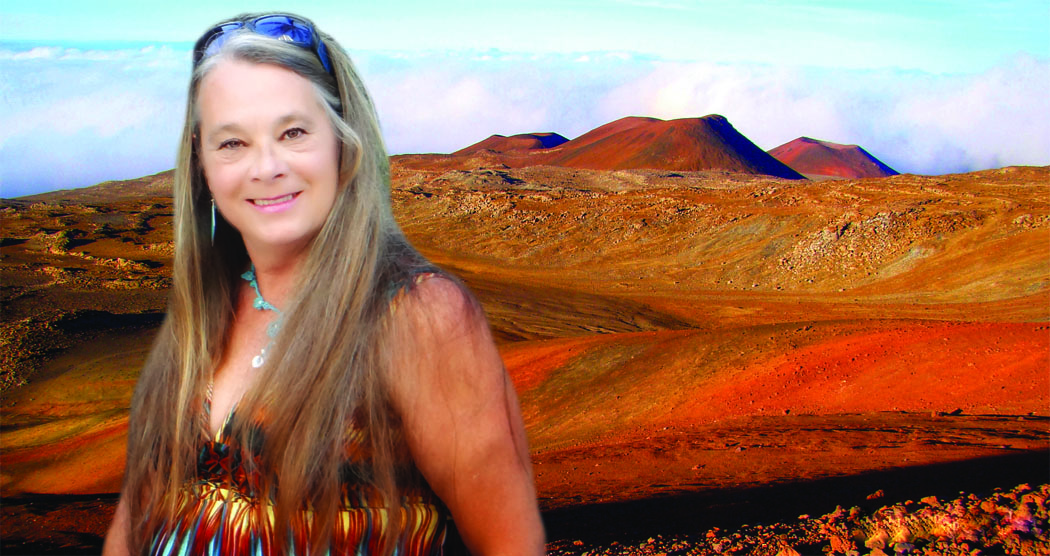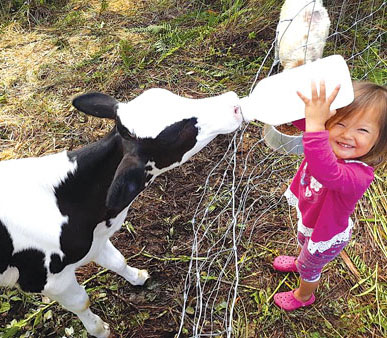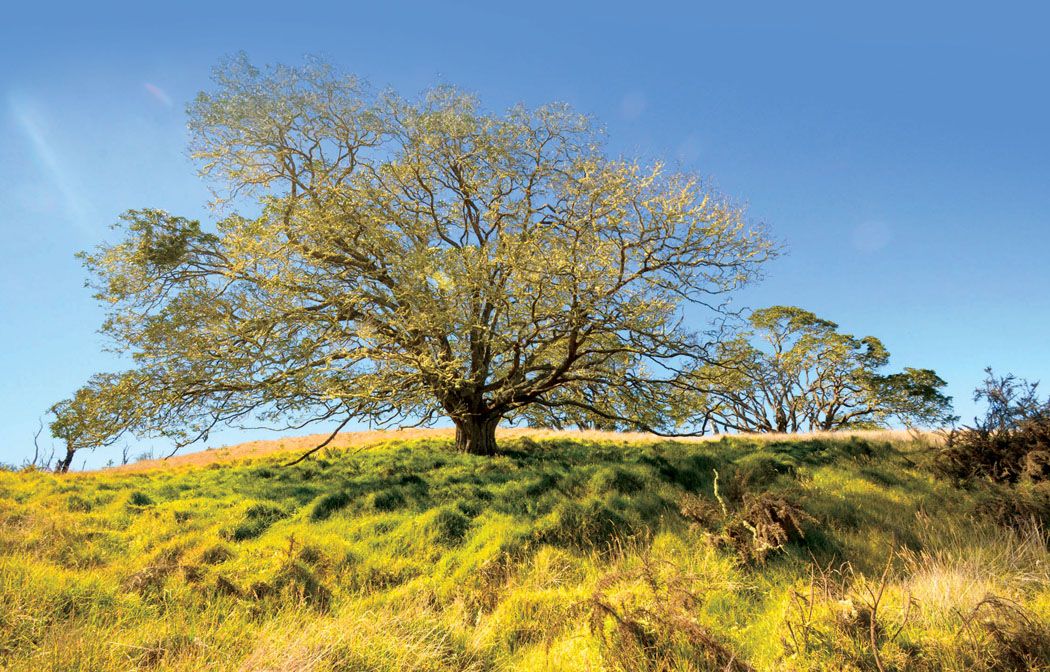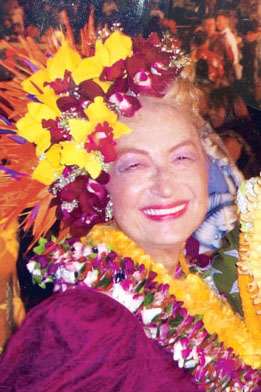
Aunty BJ Pa: Tahitian Dance Pioneer Paved the Way

By Tiffany DeMasters
82-year-old Betty Jane “BJ” Pa is the perfect role model for helping kūpuna (elders) live their lives to the fullest, as she continues to fulfill her passion as a hula dancer, despite her own health issues, and even while receiving her own hospice care. Her fierce spirit goes beyond being an example to her peers. She was a trailblazer for Tahitian dance on Hawai‘i Island, being the dance style’s first solo performer on Hawai‘i Island more than 60 years ago.
Sitting in the lobby of the Hilo Hawaiian Hotel on a sunny afternoon in June, Aunty BJ, wearing bright colors and a yellow orchid arrangement in her hair, sifts through boxes of photos that tell a story of her life as a hula and Tahitian dancer.
BJ says she loves to dance and be around people. With the support and tutelage of hula greats George Na‘ope and Iolani Luahine, she was able to share her talents during a time when Tahitian dance was not widely accepted by kumu (teachers) on Hawai‘i Island.
BJ has led a rich life not only as an entertainer, but also as a wife, mother of three children, and an entrepreneur, starting her own floral business—BJ’s Creations. The Hilo woman still dances despite serious health problems that have plagued her throughout the years. To this day, she is performing, as her health permits her, with three different hālau (hula groups), and plans to attend the Hawai‘i Kūpuna Hula Festival in Kailua-Kona this month.
“She made a whole lotta people want to come learn to dance hula and Tahitian,” says her husband, Sam. “She was willing to teach all.”
The Entertainer
Aunty BJ started dancing hula when she was in the second grade. On Saturdays, she would practice at the Hilo Center, across the street from Hilo Theater, which was later swept away by the 1941 tsunami. BJ says she loved the dance immediately. It was an escape. She recalls participating in shows when she was younger, but her professional career as a solo performer didn’t begin until she was about 20 years old.
Kaui Brandt came to Hilo in 1956. By that time, BJ was an experienced hula dancer whose curiosity had been piqued from watching Tahitan dance on TV, and so she became Kaui’s first student. Soon BJ was dancing Tahitan professionally—it was different, quite unlike the hula style of dancing typically seen, and before long the nightclubs in Hilo were booking her to perform.
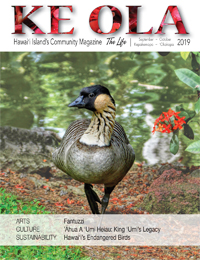
Being the first local Tahitian dancer wasn’t easy because it wasn’t accepted by some of the kumu. She explains that the teachers at the time were used to the hula, where the dancers were all covered up.
“Then here I am, I’m not Polynesian, I mean I have a little bit of Hawaiian, but you see a white person—I was bumping and grinding,” says Aunty BJ. “Your body is more exposed and there were some that didn’t appreciate that.”
Aunty BJ also started dancing as a solo Tahitian dancer in Kailua-Kona. She performed at Johnny Spencer’s Steak House along with other restaurants in the area. While living in Kona, Aunty BJ lived near Iolani, a kumu to many of the teachers, who at the time, was the caretaker of Hulihe‘e Palace. The two became friends. BJ says it was Iolani who taught her the importance of facial expressions during a performance.
BJ recalls going with Iolani to shows to watch her perform. She explains hula isn’t just about the hands and feet. It’s also about facial expressions. She adds, “In hula you express from your na‘au [core].”
She also performed at Hilo’s Grand Naniloa Hotel. She greeted ships in Hilo and took the stage for servicemen at the Pōhakuloa Training Area. She had the opportunity to perform for dignitaries, including President Lyndon B. Johnson when he arrived at Hilo International Airport.
In addition, BJ performed in Honolulu and had the opportunity to go to the mainland when she traveled with the University of Hawai‘i at Hilo’s extension to Washington DC, where she performed hula at the State Capitol.
After Kaui left for Honolulu, BJ joined Uncle George, a kumu to many of today’s teachers. He was among a small group of kumu who encouraged her Tahitian dancing and invited her to teach in his studio.
Aunty BJ says Uncle George was a good friend and had her involved in many things throughout the years, including the Merrie Monarch Hula Festival. When he moved to Kona, she danced with Lani Wong.
Fixture of Hawai‘i Island’s Hula Community
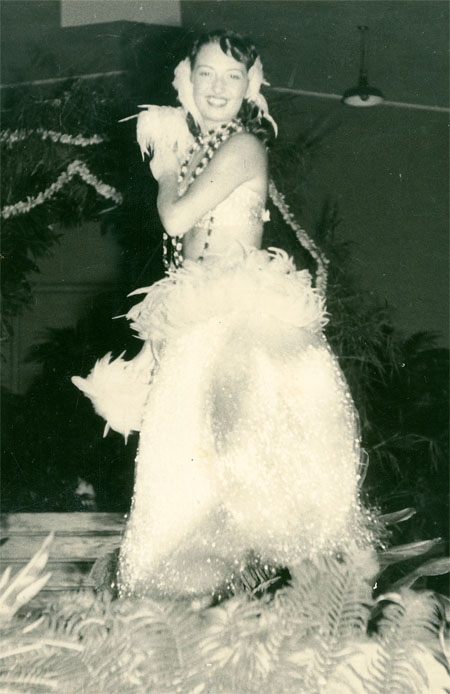
Aunty BJ was among the first performers and participants in the pageantry when the Merrie Monarch began in 1968 as a way to bolster tourism in Hilo. She was in every festival before it became a competition in 1971. While she never competed in the Merrie Monarch competition, Aunty BJ would go as a spectator and to help Uncle George, one of the festival founders. She and George are pictured in several of the old Merrie Monarch calendars, which she keeps as mementos. She has attended the event almost every year, has helped as a greeter, and has performed on different stages throughout the weeklong festivities. Aunty BJ performs with Alu Like and has been featured as a solo dancer.
Haunani Medeiros, activities coordinator with Alu Like, a native Hawaiian program for kūpuna, says Aunty BJ has been part of the program for more than 20 years. Haunani describes BJ as “a woman full of life. Everything she does is fabulous. It’s an honor knowing this lady.”
Haunani says sheʻs told BJ on several occasions that she should have been Miss Aloha Hula, as this talented woman embodies the spirit of aloha and hula.
While Aunty BJ is known for her dancing, she’s also famous for her skill in lei-making and floral arrangements, and her hairpieces often distinguish her.
Aunty BJ says her hairpieces always fascinate everyone, as she always has a “garden on my head.”
“You’re in Hawai‘i, why not wear flowers? It’s part of hula,” BJ says. Her love for flowers led her to create her own floral business in the 1990s. While she makes several hairpieces, she also does wedding floral arrangements.
Throughout the years, Aunty BJ continues to volunteer with Alu Like through its various programs. Haunani says Aunty BJ makes haku lei and hairpieces for the ladies who dance with Alu Like. She provides all the flowers and doesn’t charge.
She performs throughout the year with Alu Like and two other hālau, as her health permits. She also participates in Kūpuna Hula every September in Kona, and intends to again this year.
Hula Is Life
Outside of hula and flowers, Aunty BJ worked in sales at Hilo Hattie and later the Mu‘umu‘u Tree at the Naniloa Hotel; however, her life changed dramatically in the 1970s when she fell down a flight of stairs while on Maui, where she had been entertaining at one of the hotels. She suffered a neck injury and was bedridden for almost two years.
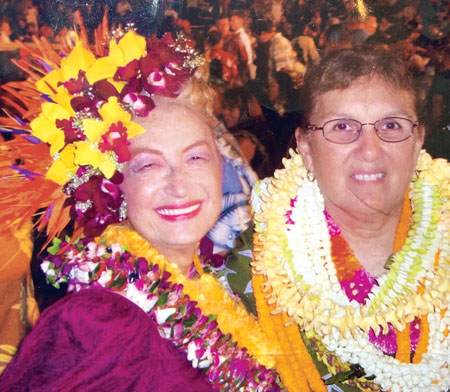
After she recovered, she went back to work at Hilo Hattie. About a year and half later, she was forced into medical retirement due to increasing health problems. In 2005, Aunty BJ underwent open-heart surgery in order to receive an artificial heart valve.
In 2000, Aunty BJ was honored as the island’s first Tahitian dancer at Hilo’s Heiva and Tahiti Fete. A few years after the fete she, once again, suffered a medical setback when she contracted E. coli while being treated in Honolulu for pneumonia. As a result of the infection, she couldn’t walk. “I lost my legs,” she says.
Aunty BJ was admitted to the Ka Punawai Ola Nursing Home in Kapolei on O‘ahu where she had to relearn how to walk. Hula found her again during her time there. She says a hula hālau came to entertain the residents and the kumu invited her to join. She also ended up joining another group out of Kapolei that taught at Ewa Beach’s senior housing.
In 2015, Aunty BJ was told by doctors that her artificial valve was not working and there was nothing more they could do for her. They advised her to go back to Hilo to get her affairs in order, give away her belongings, and plan her funeral. At first, Aunty BJ did as the doctors advised; however, that was too depressing, so she went back to doing what she does best—living and dancing hula. Aunty BJ dances with Alu Like as well as hālau hula Nā Wahine a nā Kane Punahele ‘o Ka Pu‘uwai.
Aunty BJ also volunteers through one of Alu Like’s cultural programs where she teaches visitors how to make lei and hairpieces.
“I’m here through the grace of God every day and I’m still dancing,” says Aunty BJ. “If I die dancing hula, I’ll die happy.” ❖
